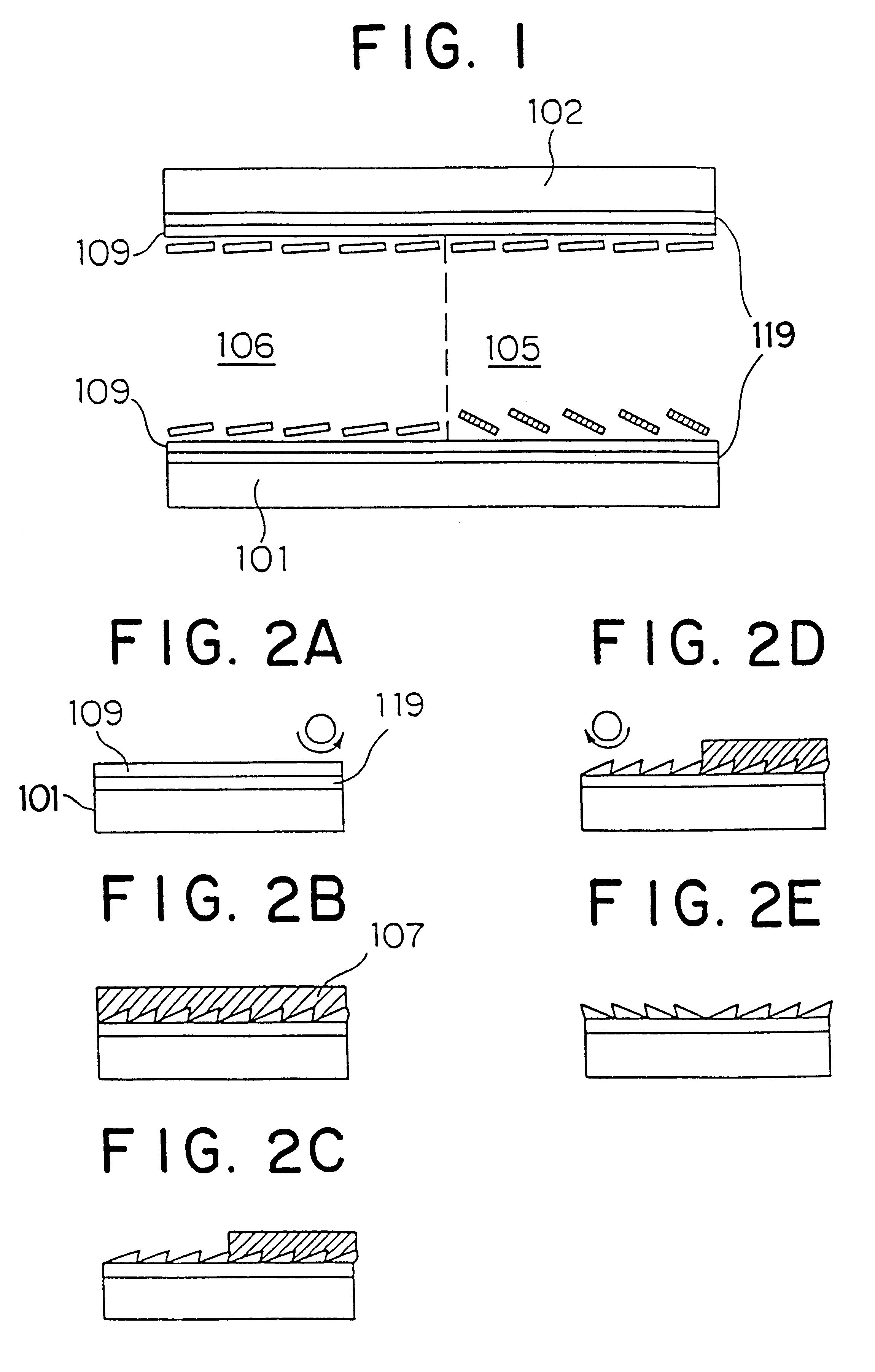Liquid crystal display cell
a display cell and liquid crystal technology, applied in static indicating devices, instruments, non-linear optics, etc., can solve problems such as shifting or drifting of disclination lines, deteriorating display cell performance,
- Summary
- Abstract
- Description
- Claims
- Application Information
AI Technical Summary
Problems solved by technology
Method used
Image
Examples
embodiment 2
A liquid crystal display cell according to Embodiment 2 was fabricated similarly to Embodiment 1 except that the orientation film providing the lower pre-tilt angle for the counter substrate 202 in Embodiment 1 was replaced by an orientation film made of polyimide called RN-1006 and supplied from Nissan Chemical Corp. The evaluation procedure confirmed that Embodiment 2 exhibited excellent characteristics provided by the two-orientation alignment. Further, the crystal rotation technology evaluated the pre-tilt angle provided by the polyimide made of RN-1006 as 3 degrees in an anti-parallel cell fabricated for Embodiment 2 similarly to Embodiment 1.
embodiment 3
A liquid crystal cell according to Embodiment 3 was fabricated similarly to Embodiment 1, except the orientation film providing the high pre-tilt angle and the baking temperature were replaced by an orientation film made of a polyimide raw resin called RN-715 supplied from Nissan Chemical Corp. and 250.degree. C., respectively. The results verified an excellent characteristic resulting from a divided orientation alignment configuration. The pre-tilt angle provided by the RN-715 film was evaluated by using crystal rotation technology similarly to Embodiment 1. The results showed that the first portions covered with the photoresist pattern during the second rubbing step provided a pre-tilt angle of 12 degrees while the second portions exposed directly to the second rubbing step provided a pre-tilt angle of 9 degrees.
embodiment 4
A liquid crystal cell according to Embodiment 4 was fabricated similarly to Embodiment 1, except the orientation film providing the high pre-tilt angle and the baking emperature in Embodiment 1 were replaced by an orientation film made of a polyimide raw resin called LC-102 supplied from Hitachi Chemical Corp. and 250.degree. C., respectively. The results showed an excellent characteristic resulting from a divided orientation alignment configuration. The pre-tilt angle provided by LC-102 was measured by a crystal rotation technology similarly to Embodiment 1. The results showed that the first portions covered with the photoresist pattern during the second rubbing step provided a pre-tilt angle of 3 degrees while the second portions exposed directly to the second rubbing step provided a pre-tilt angle of 2 degrees.
PUM
| Property | Measurement | Unit |
|---|---|---|
| pre-tilt angle | aaaaa | aaaaa |
| pre-tilt angle | aaaaa | aaaaa |
| pre-tilt angle | aaaaa | aaaaa |
Abstract
Description
Claims
Application Information
 Login to View More
Login to View More - R&D
- Intellectual Property
- Life Sciences
- Materials
- Tech Scout
- Unparalleled Data Quality
- Higher Quality Content
- 60% Fewer Hallucinations
Browse by: Latest US Patents, China's latest patents, Technical Efficacy Thesaurus, Application Domain, Technology Topic, Popular Technical Reports.
© 2025 PatSnap. All rights reserved.Legal|Privacy policy|Modern Slavery Act Transparency Statement|Sitemap|About US| Contact US: help@patsnap.com



